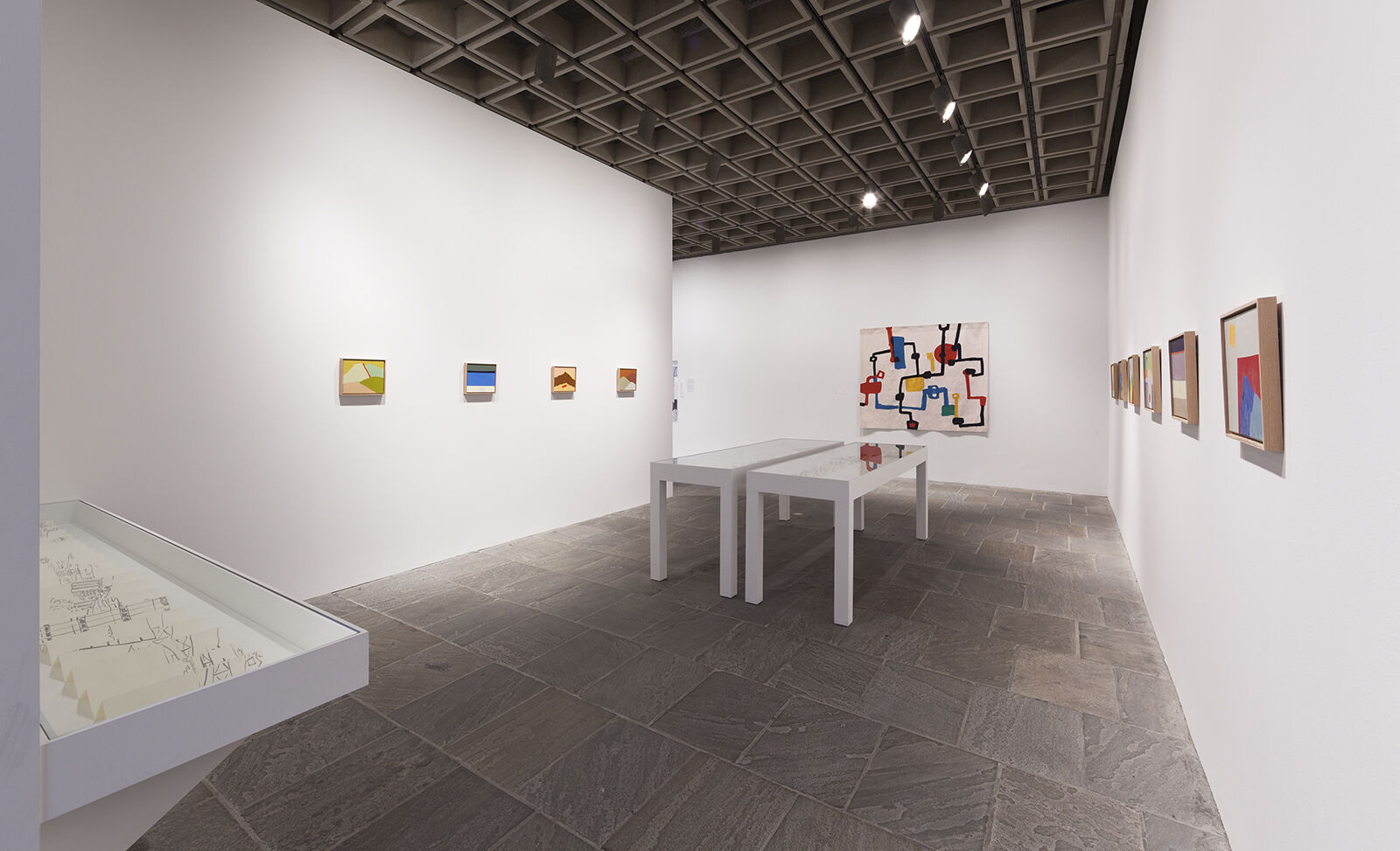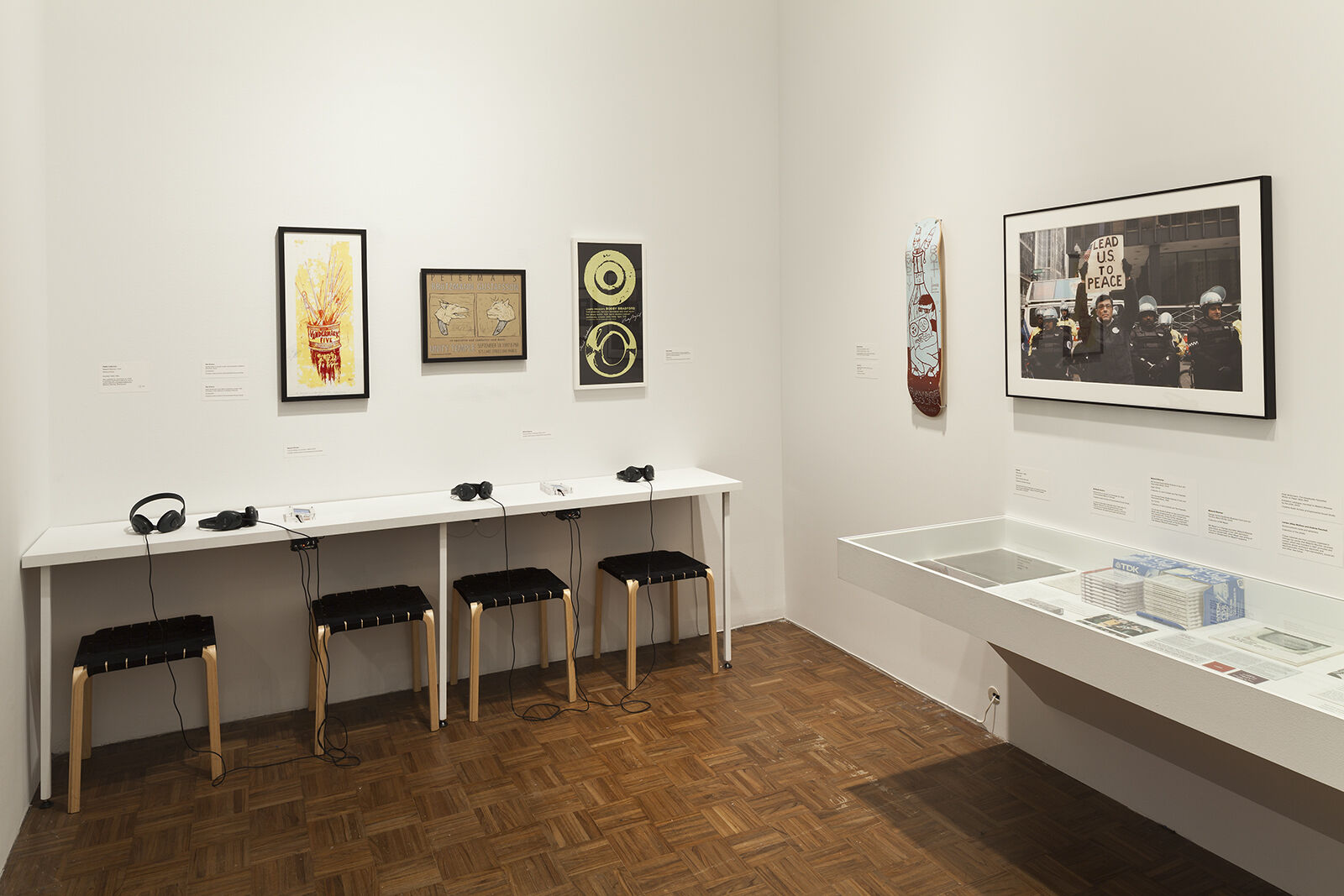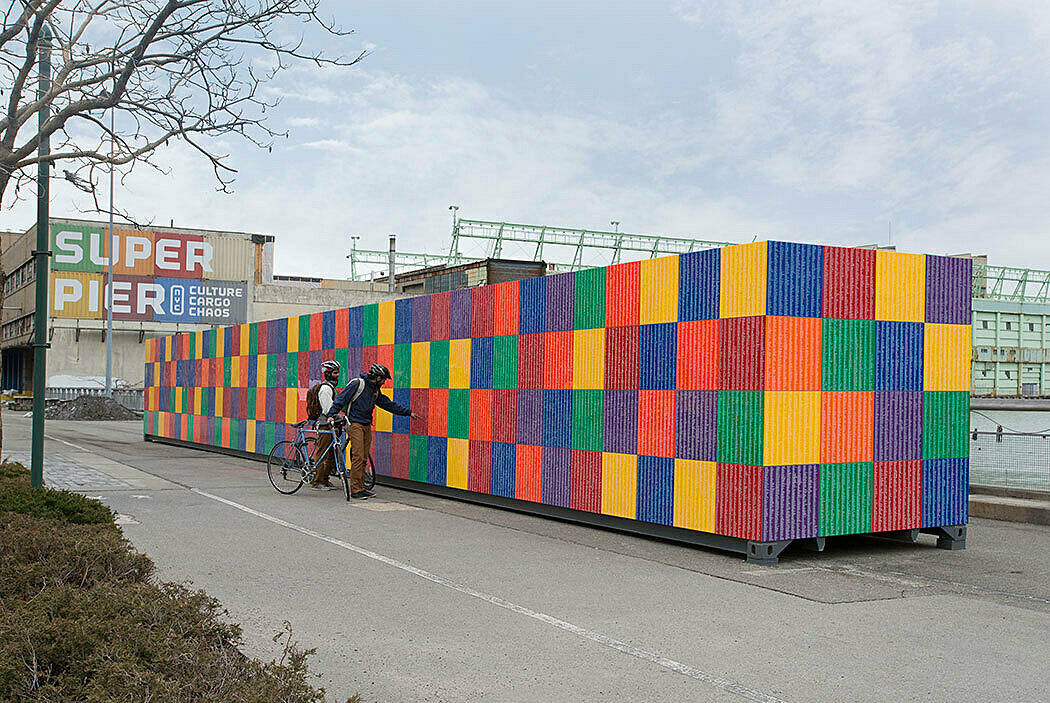Whitney Biennial 2014
Mar 7–May 25, 2014
Whitney Biennial 2014
The 2014 Whitney Biennial will take a bold new form as three curators from outside the Museum—Stuart Comer (Chief Curator of Media and Performance Art at MoMA), Anthony Elms (Associate Curator at the Institute of Contemporary Art, Philadelphia), and Michelle Grabner (artist and Professor in the Painting and Drawing Department at the School of the Art Institute, Chicago)—each oversee one floor, representing a range of geographic vantages and curatorial methodologies.
Donna De Salvo, Chief Curator and Deputy Director for Programs at the Whitney, noted: “The 2014 Biennial brings together the findings of three curators with very distinct points of view. There is little overlap in the artists they have selected and yet there is common ground. This can be seen in their choice of artists working in interdisciplinary ways, artists working collectively, and artists from a variety of generations. Together, the 103 participants offer one of the broadest and most diverse takes on art in the United States that the Whitney has offered in many years.”
This Biennial will be the last to take place in the Whitney Museum of American Art’s building at 945 Madison Avenue at 75th Street before the Museum moves downtown to its new building in the spring of 2015. This is the 77th in the Museum’s ongoing series of Annuals and Biennials begun in 1932 by Gertrude Vanderbilt Whitney.
Whitney curators Elisabeth Sussman and Jay Sanders, who organized the widely acclaimed 2012 Biennial, will advise on the exhibition.
Sponsored in part by
Major support is provided by
Generous support is provided by The Brown Foundation, Inc.; The Keith Haring Foundation; Anne Cox Chambers; and anonymous donors.
Additional support is provided by 2014 Biennial Committee Chairs: Beth Rudin DeWoody and Rebecca and Marty Eisenberg, 2014 Biennial Committee members: Jill and Darius Bikoff, John J. Studzinski CBE, Philip Aarons and Shelley Fox Aarons, James Keith Brown and Eric Diefenbach, Glenn and Amanda Fuhrman, Barbara and Michael Gamson, Jill and Peter Kraus, Diane and Adam E. Max, and Carla Emil and Rich Silverstein; and the Consulate General of the Federal Republic of Germany.
Funding for the 2014 Biennial is also provided by endowments created by Melva Bucksbaum, Emily Fisher Landau, and Leonard A. Lauder.
Support for the digital Whitney Guide, a Windows Phone app created exclusively for the 2014 Whitney Biennial, is provided by Microsoft.
2014 Biennial Artists
Academy Records and Matt Hanner Terry Adkins Etel Adnan Alma Allen Ei Arakawa and Carissa Rodriguez Uri Aran Robert Ashley and Alex Waterman Michel Auder Lisa Anne Auerbach Julie Ault Darren Bader Kevin Beasley Gretchen Bender Stephen Berens Dawoud Bey Jennifer Bornstein Andrew Bujalski Elijah Burgher Lucien Castaing-Taylor, Véréna Paravel, and Sensory Ethnography Lab Sarah Charlesworth Critical Practices Inc. Matthew Deleget David Diao Zackary Drucker and Rhys Ernst Paul Druecke Jimmie Durham Rochelle Feinstein Radamés “Juni” Figueroa Morgan Fisher Louise Fishman Victoria Fu Gaylen Gerber with David Hammons, Sherrie Levine, and Trevor Shimizu | Jeff Gibson Tony Greene curated by Richard Hawkins and Catherine Opie Joseph Grigely Miguel Gutierrez Karl Haendel Philip Hanson Jonn Herschend Sheila Hicks Channa Horwitz HOWDOYOUSAYYAMINAFRICAN? Susan Howe Jacqueline Humphries Gary Indiana Doug Ischar Carol Jackson Travis Jeppesen Alex Jovanovich Angie Keefer Ben Kinmont Shio Kusaka Chris Larson Diego Leclery Zoe Leonard Tony Lewis Pam Lins Fred Lonidier Ken Lum Shana Lutker Dashiell Manley John Mason Keith Mayerson Suzanne McClelland Dave McKenzie Bjarne Melgaard Rebecca Morris | Joshua Mosley My Barbarian (Malik Gaines, Jade Gordon and Alexandro Segade) Dona Nelson Ken Okiishi Pauline Oliveros Joel Otterson Laura Owens Paul P. taisha paggett Charlemagne Palestine Public Collectors Sara Greenberger Rafferty Steve Reinke with Jessie Mott David Robbins Sterling Ruby Miljohn Ruperto Jacolby Satterwhite Peter Schuyff Allan Sekula Semiotext(e) Amy Sillman Valerie Snobeck and Catherine Sullivan A.L. Steiner Emily Sundblad Ricky Swallow Tony Tasset Sergei Tcherepnin Triple Canopy Philip Vanderhyden Pedro Vélez Charline von Heyl David Foster Wallace Dan Walsh Donelle Woolford Molly Zuckerman-Hartung |
Make the most of your Biennial visit
Pick up a free Whitney Guide when you arrive
Whitney Guide, a new Windows Phone app created exclusively for the 2014 Biennial, features interviews with Biennial artists, commentary from the Biennial curators, and a Kids Tour designed for 6–10 year olds.
- Take a guided tour to hear from artists and curators
- Browse the exhibition by floor to explore on your own
- Access information about daily performances and events to ensure you don’t miss a thing
Support for the Whitney Guide is provided by Microsoft.
Curatorial Statements
Anthony ElmsIf the Whitney Biennial is a snapshot of American art at this moment, and if any intimate encounter with American art at this moment must be mediated (as all intimacies these days are), then Marcel Breuer’s museum building here at 945 Madison Avenue is a well-disposed mediation for capturing twenty-four scenes of America. In assembling the artistsand groups I tried to answer a question of Breuer’s from his notes on the building: “What should a museum look like, a museum in Manhattan?” | Stuart ComerHow to define “American” in a survey of contemporary American art, especially one with as much history behind it as the Whitney Biennial, is a question that has often challenged, even vexed, curators. As an American who has spent much of the last thirteen years in the United Kingdom, I have been compelled by artists whose work is as hybrid as the significant global, environmental, and technological shifts reshaping the United States. The work I have brought together for the Biennial reflects this, whether through complex relationships between linguistic and visual forms; the interface of digital technologies with more traditional media, and the recorded past with the lived moment; the development of two-dimensional scores, scripts, and patterns into three- or even four-dimensional actions and environments; the challenging of binary conventions of gender; or the intricacy of cosmopolitan, cross-national identities. Ideas about migration and movement are raised here too, as are those related to a position (geographic or otherwise) at a kind of periphery, off the mainland so to speak. The surfaces and spaces of the gallery respond in kind, playing multiple roles—from white cube to theater to cinema to publishing forum, and sometimes all of these at once. | Michelle GrabnerAlthough it may be far-reaching to think that a Whitney Biennial could be organized as a curriculum for other artists, aiming at pedagogy seemed a worthy ambition. Not because I am an artist and a teacher, nor because I sought to create a democratic survey, but because I didn’t want the frame that the viewer will look through to be a purely subjective take on contemporary American art. Instead, I developed a fourth-floor curriculum that presents identifiable themes, generalities even, that are currently established in the textures of contemporary aesthetic, political, and economic realities. Within this curriculum, contours can be drawn around three overlapping priorities: contemporary abstract painting by women; materiality and affect theory; and art as strategy—in other words, conceptual practices oriented toward criticality. Theoretically, the works that I included will each demand from the viewer a varied network of analysis. |
Events
View all-

Lower Manhattan Cultural Council Studio Visits: Sara Greenberger Rafferty And Jacolby Satterwhite
Wednesday, May 28, 2014
7 pm -

Member Morning Viewing: 2014 Whitney Biennial
Saturday, May 24, 2014
10–11 am -

Donelle Woolford:
Dick’s Last Stand
at White Flag Projects, Saint Louis, MissouriThursday, May 22, 2014
8 pm -

Seminars with Artists:
Amy SillmanThursday, May 22, 2014
6:30 pm
Publication
Whitney Biennial 2014
By Stuart Comer, Anthony Elms, and Michelle Grabner
Whitney Biennial 2014 serves as a record of this historic exhibition, featuring the work of almost 100 artists working in a variety of media, including painting, sculpture, photography, film, dance, and performance. Divided into three distinct sections presenting each curator’s unique perspective, this superb resource features specially commissioned texts alongside curatorial essays and unique visual content prepared by the Biennial participants.
This catalogue is no longer available at the Museum shop.
In the News
"State of Our Art, According to Whitney: A Guide to the 2014 Whitney Museum Biennial"
—The New York Times
"Still Sensing the Presence of a Departed Composer: Robert Ashley’s Work Lives On at the Whitney Biennial"
—The New York Times
"Take Ecstasy With Me, A Tribute to Jose Esteban Munoz"
—Huffington Post
"Whitney Biennial Goes Big with 3 Curators, 103 Participants"
—Gotham Magazine
"The 2014 Whitney Biennial Is Taking Shape"
—The New York Times
"10 Things the 2014 Whitney Biennial List Tells Us"
—Artspace
More from this series
Learn more about the Whitney Biennial, the longest-running survey of American art.






































